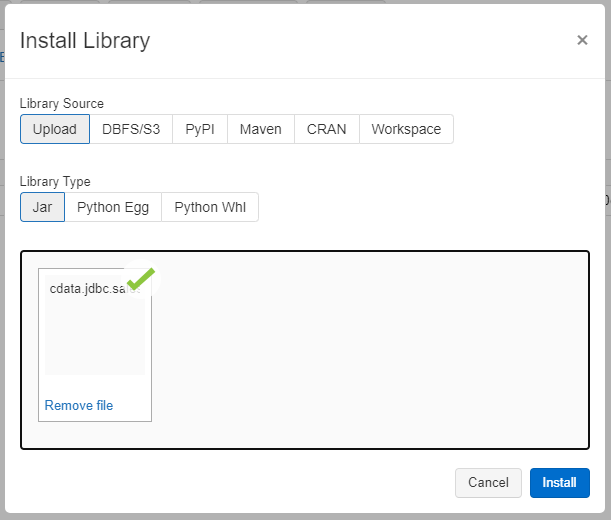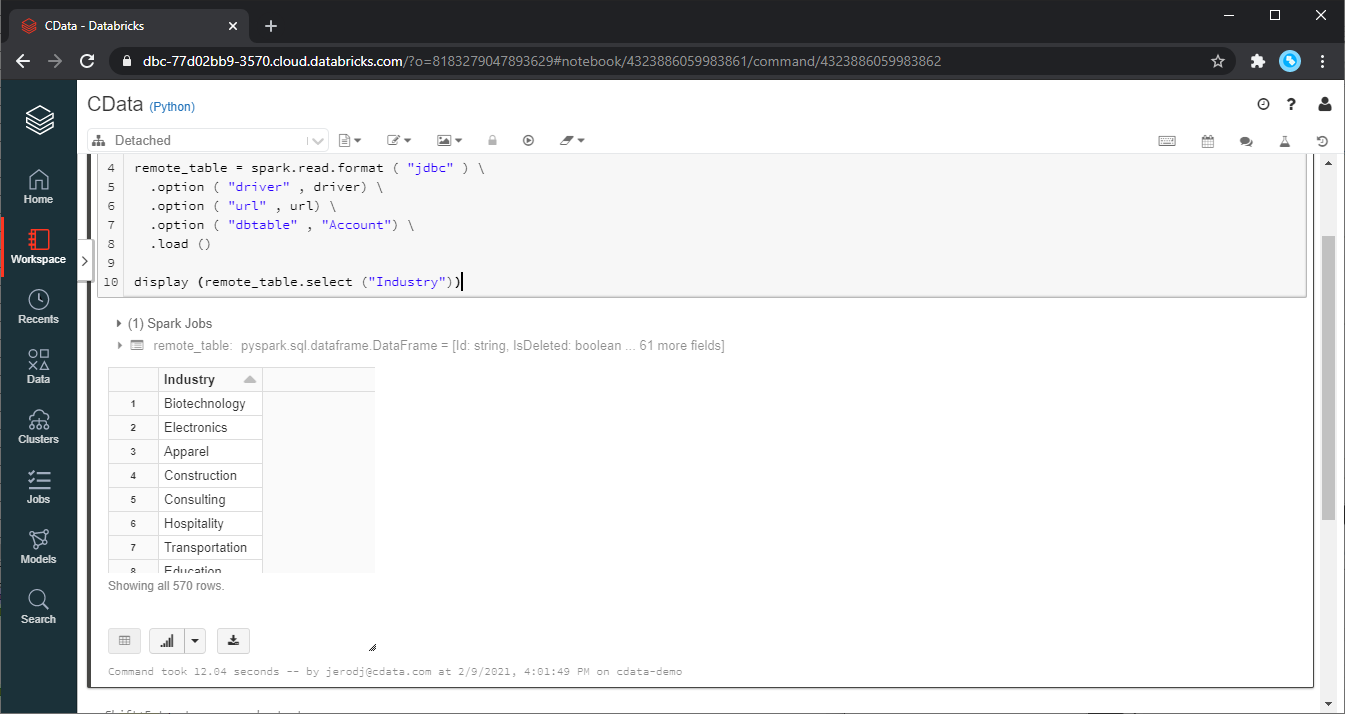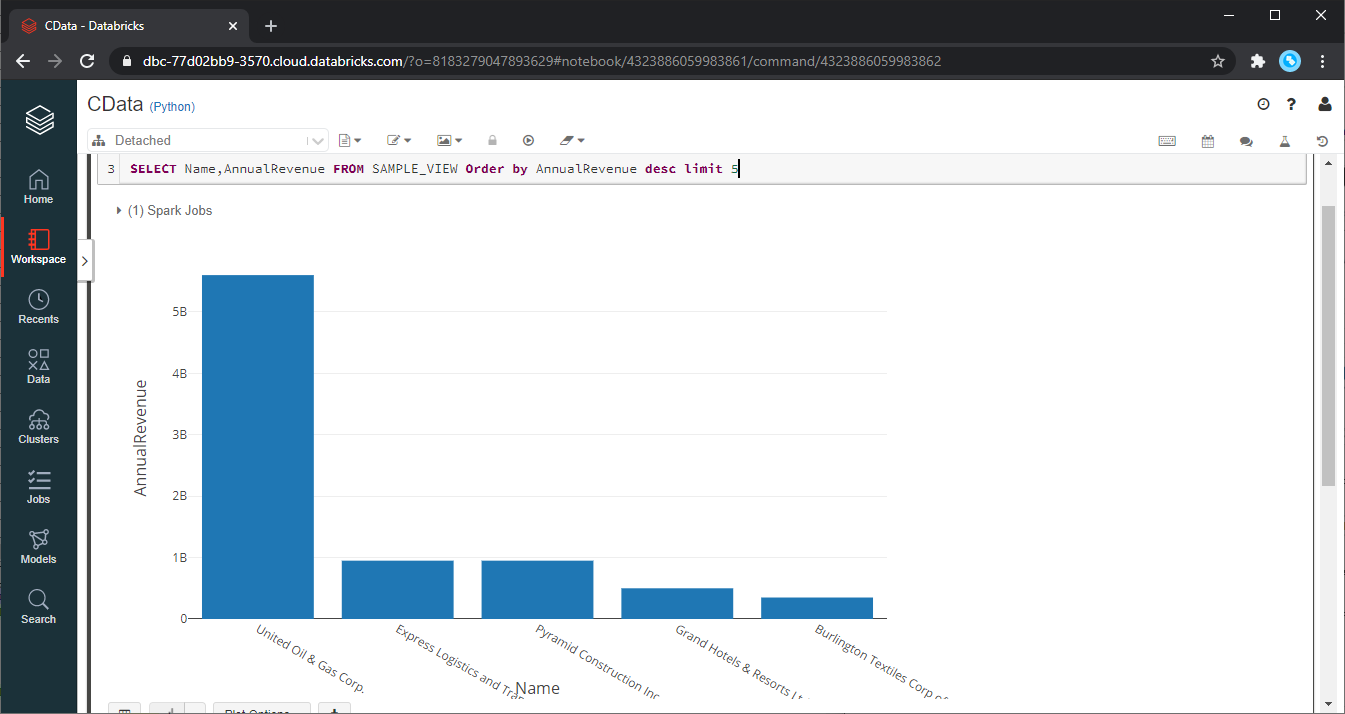Model Context Protocol (MCP) finally gives AI models a way to access the business data needed to make them really useful at work. CData MCP Servers have the depth and performance to make sure AI has access to all of the answers.
Try them now for free →Process & Analyze OData Services in Databricks (AWS)
Use CData, AWS, and Databricks to perform data engineering and data science on live OData Services.
Databricks is a cloud-based service that provides data processing capabilities through Apache Spark. When paired with the CData JDBC Driver, customers can use Databricks to perform data engineering and data science on live OData services. This article walks through hosting the CData JDBC Driver in AWS, as well as connecting to and processing live OData services in Databricks.
With built-in optimized data processing, the CData JDBC Driver offers unmatched performance for interacting with live OData services. When you issue complex SQL queries to OData, the driver pushes supported SQL operations, like filters and aggregations, directly to OData and utilizes the embedded SQL engine to process unsupported operations client-side (often SQL functions and JOIN operations). Its built-in dynamic metadata querying allows you to work with and analyze OData services using native data types.
About OData Data Integration
CData simplifies access and integration of live OData services data. Our customers leverage CData connectivity to:
- Access OData versions 2.0, 3.0, and 4.0, working with legacy services and the latest features and capabilities.
- Leverage advanced query options, including $filter, $select, and $expand, enhancing data retrieval from 3rd party tools.
- Use Server-side execution of aggregation and grouping to minimize data transfer and boost performance.
- Authenticate securely using a variety of schemes, including Azure AD, digest, negotiate, NTLM, OAuth, and more means secure authentication with every connection.
- Use SQL stored procedures to manage OData service entities - listing, creating, and removing associations between entities.
Customers use CData's solutions to regularly integrate their OData services with preferred tools, such as Power BI, MicroStrategy, or Tableau, and to replicate data from OData services to their databases or data warehouses.
Getting Started
Install the CData JDBC Driver in Databricks
To work with live OData services in Databricks, install the driver on your Databricks cluster.
- Navigate to your Databricks administration screen and select the target cluster.
- On the Libraries tab, click "Install New."
- Select "Upload" as the Library Source and "Jar" as the Library Type.
- Upload the JDBC JAR file (cdata.jdbc.odata.jar) from the installation location (typically C:\Program Files\CData[product_name]\lib).

Access OData Services in your Notebook: Python
With the JAR file installed, we are ready to work with live OData services in Databricks. Start by creating a new notebook in your workspace. Name the notebook, select Python as the language (though Scala is available as well), and choose the cluster where you installed the JDBC driver. When the notebook launches, we can configure the connection, query OData, and create a basic report.
Configure the Connection to OData
Connect to OData by referencing the JDBC Driver class and constructing a connection string to use in the JDBC URL. Additionally, you will need to set the RTK property in the JDBC URL (unless you are using a Beta driver). You can view the licensing file included in the installation for information on how to set this property.
Step 1: Connection Information
driver = "cdata.jdbc.odata.ODataDriver" url = "jdbc:odata:RTK=5246...;URL=http://services.odata.org/V4/Northwind/Northwind.svc;UseIdUrl=True;OData Version=4.0;Data Format=ATOM;"
Built-in Connection String Designer
For assistance in constructing the JDBC URL, use the connection string designer built into the OData JDBC Driver. Either double-click the JAR file or execute the jar file from the command-line.
java -jar cdata.jdbc.odata.jar
Fill in the connection properties and copy the connection string to the clipboard.
The User and Password properties, under the Authentication section, must be set to valid OData user credentials. In addition, you will need to specify a URL to a valid OData server organization root or OData services file.

Load OData Services
Once you configure the connection, you can load OData services as a dataframe using the CData JDBC Driver and the connection information.
Step 2: Reading the data
remote_table = spark.read.format ( "jdbc" ) \ .option ( "driver" , driver) \ .option ( "url" , url) \ .option ( "dbtable" , "Orders") \ .load ()
Display OData Services
Check the loaded OData services by calling the display function.
Step 3: Checking the result
display (remote_table.select ("OrderName"))

Analyze OData Services in Databricks
If you want to process data with Databricks SparkSQL, register the loaded data as a Temp View.
Step 4: Create a view or table
remote_table.createOrReplaceTempView ( "SAMPLE_VIEW" )
With the Temp View created, you can use SparkSQL to retrieve the OData services for reporting, visualization, and analysis.
% sql SELECT OrderName, Freight FROM SAMPLE_VIEW ORDER BY Freight DESC LIMIT 5

The data from OData is only available in the target notebook. If you want to use it with other users, save it as a table.
remote_table.write.format ( "parquet" ) .saveAsTable ( "SAMPLE_TABLE" )
Download a free, 30-day trial of the CData JDBC Driver for OData and start working with your live OData services in Databricks. Reach out to our Support Team if you have any questions.

